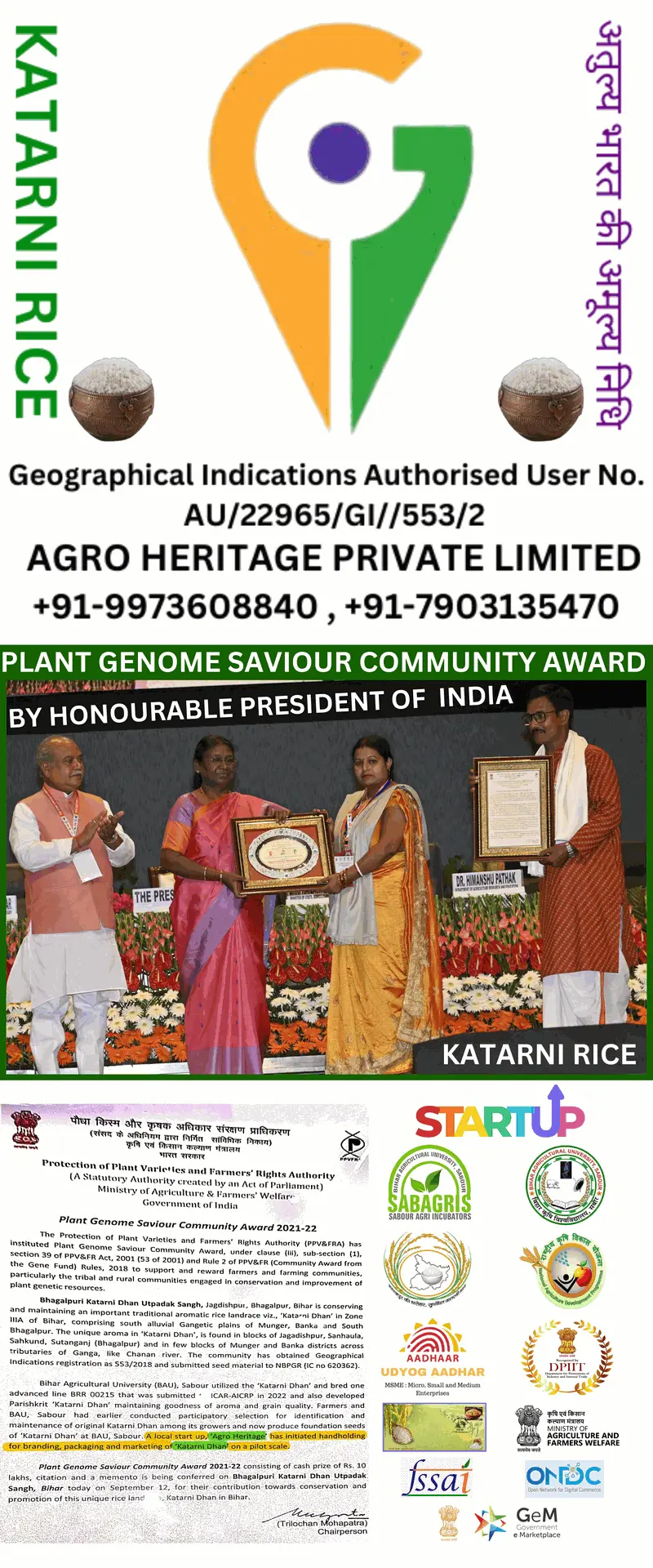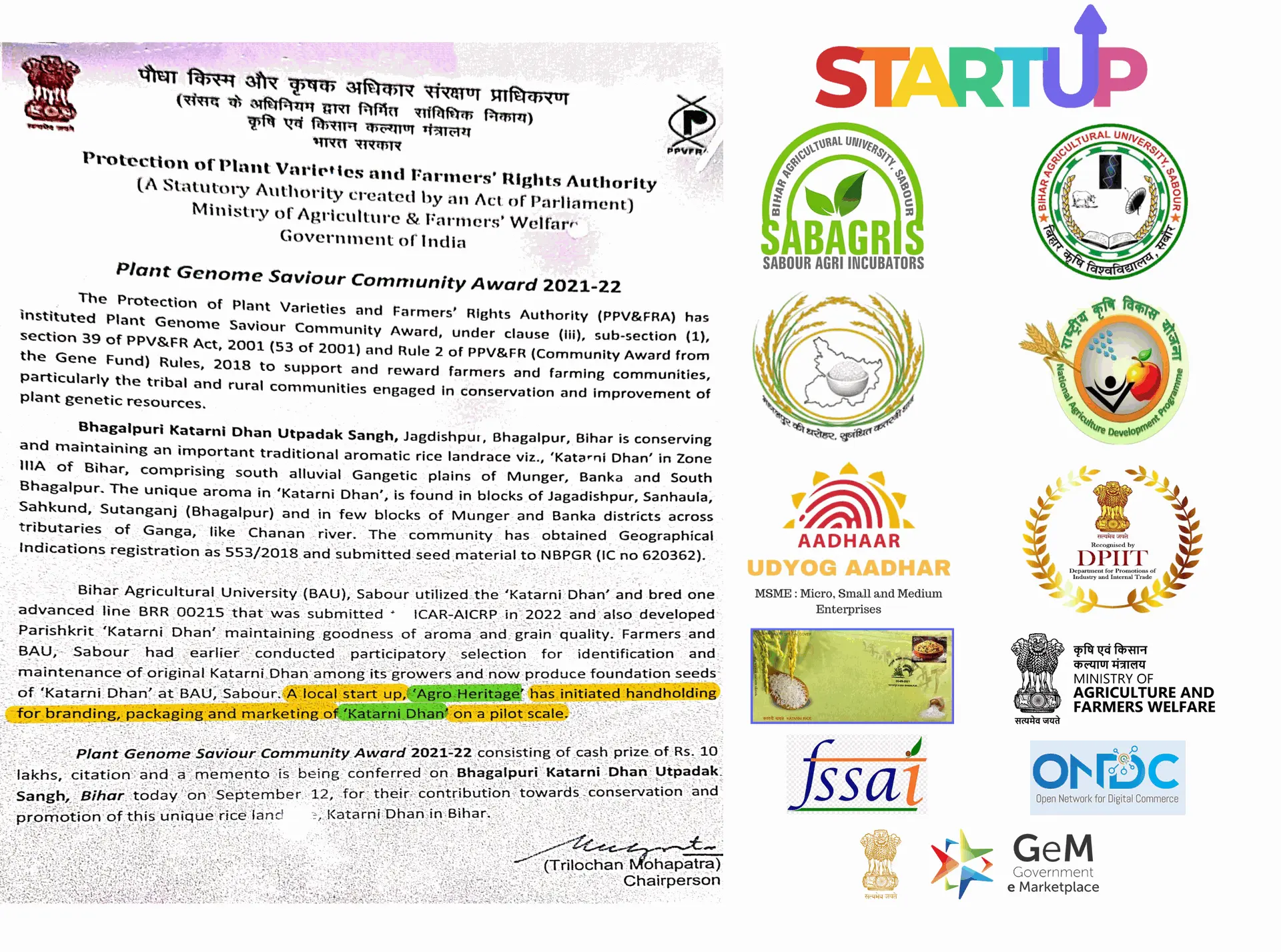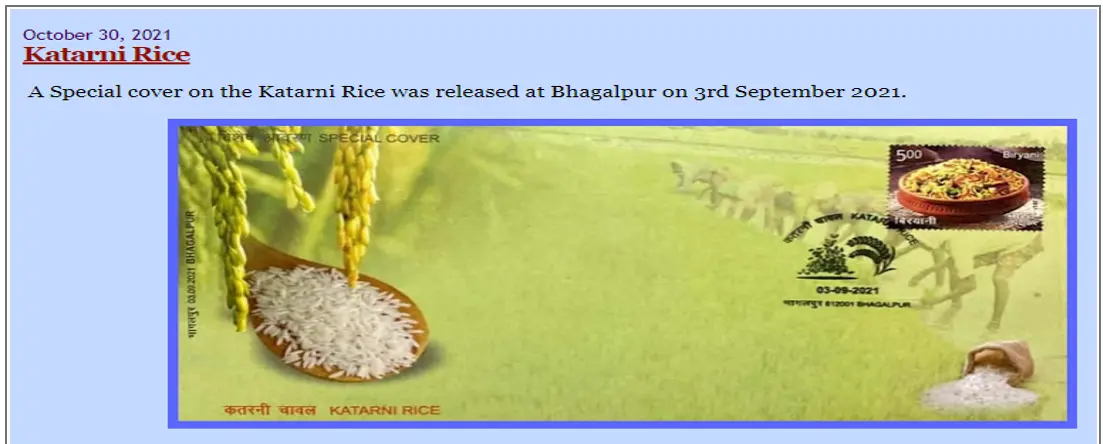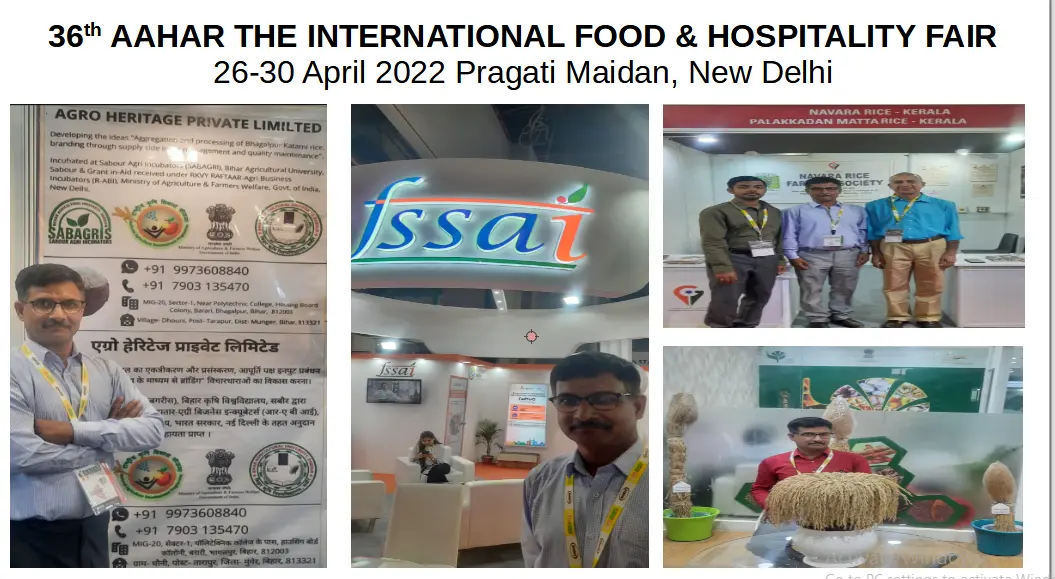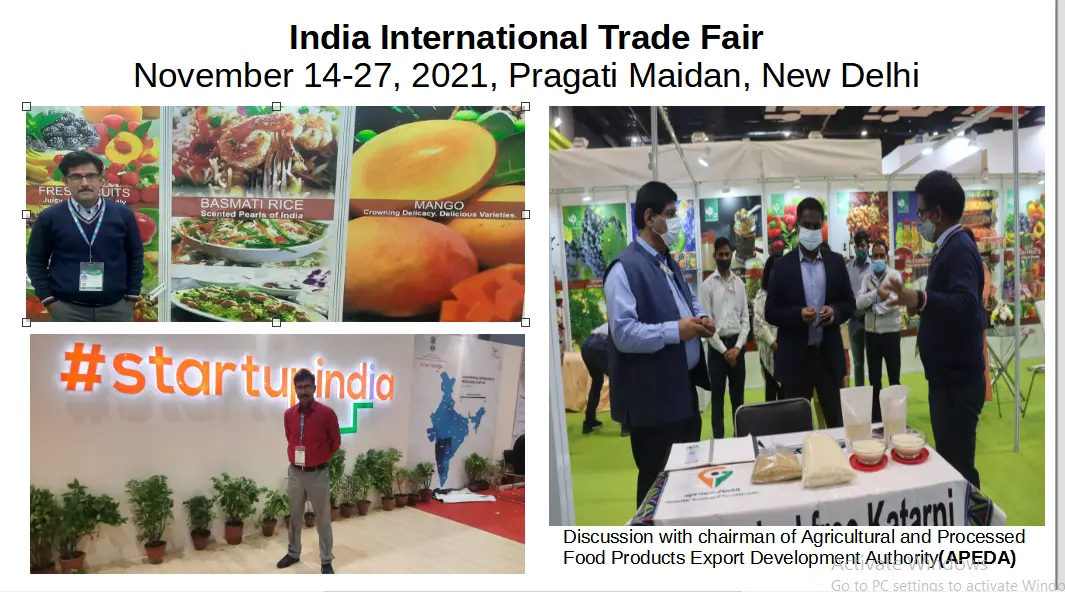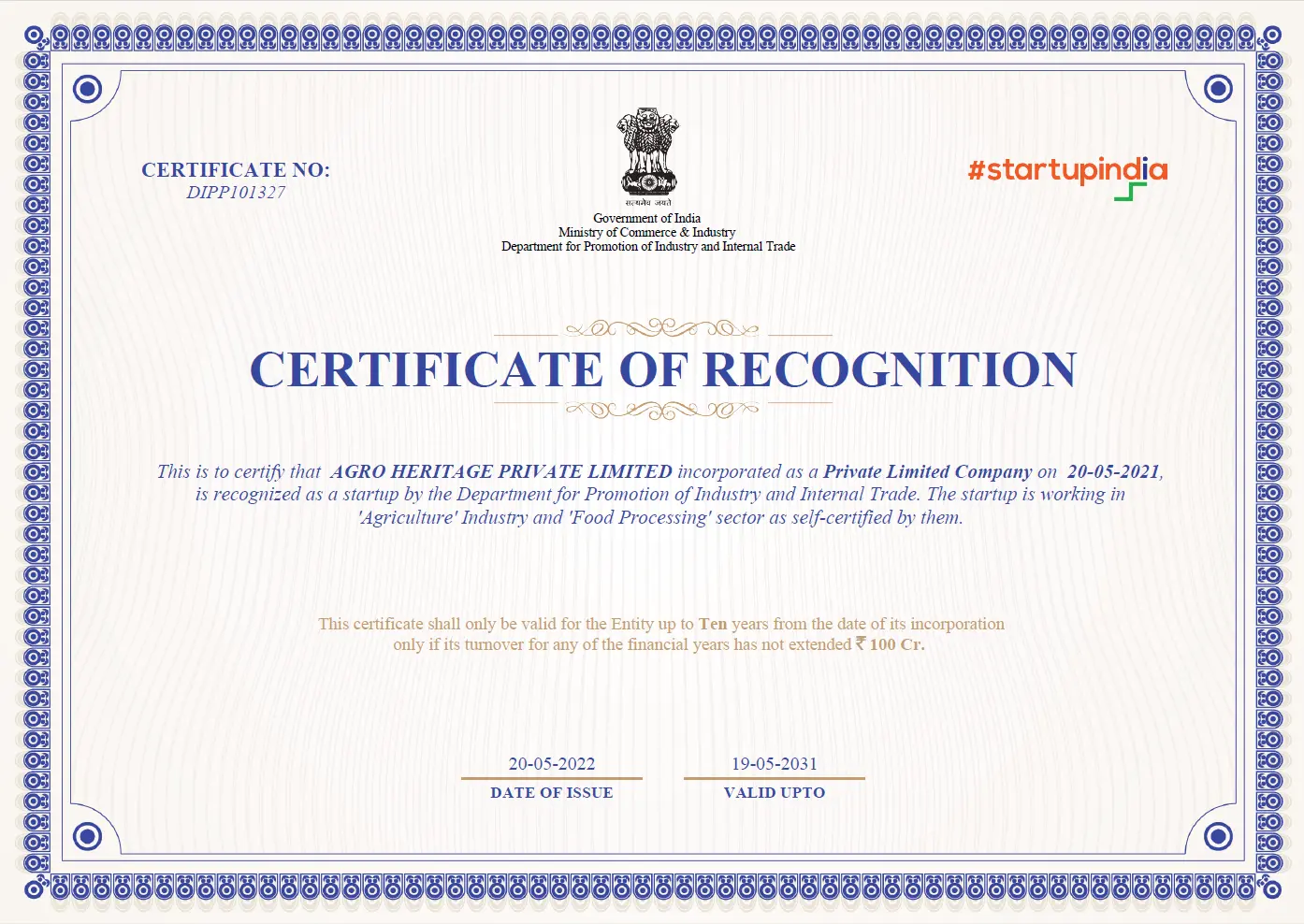
Agro Heritage Private Limited
An AGRI-STARTUP, under RKVY-RAFTAAR, DAC & FW, Government of India, New Delhi; incubated at Sabour Agri Incubators (SABAGRIs), Bihar Agricultural University, Sabour, Bhagalpur, Bihar.
OBJECTIVE : To Aggregating, Processing, Branding, Value Addition and Make Ready to Eat Products of G. I. Tagged (GEOGRAPHICAL INDICATION) BHAGALPURI KATARNI RICE.
Established in 2021, our company has actively participated in numerous national and international food/trade fairs, resulting in a consistent influx of orders at competitive prices. This success has driven us to collaborate with farmers in cultivating Katarni Paddy without the use of any chemicals throughout the entire process of cultivation, processing, and packaging.
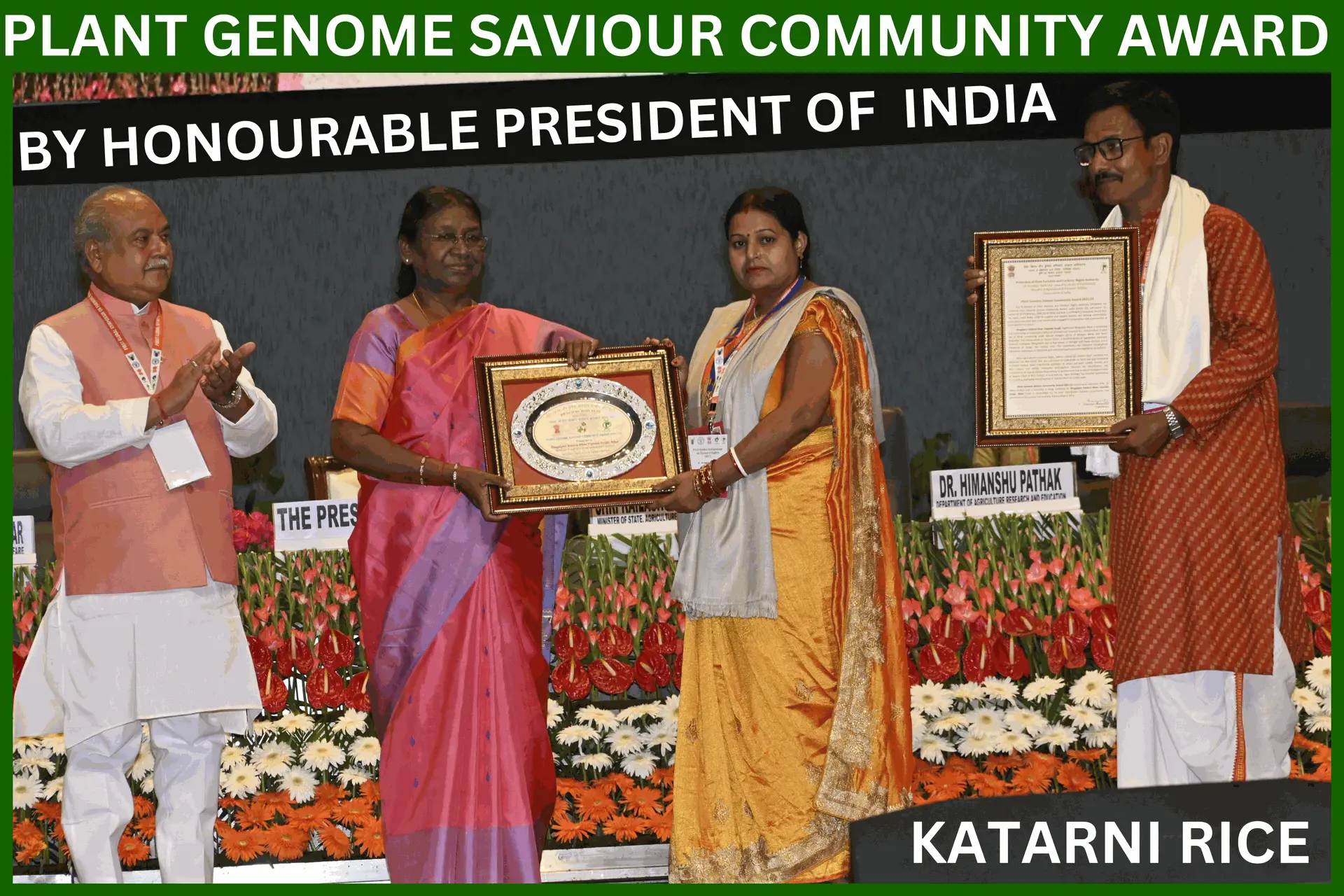
Hon'ble President of India " DROUPADI MURMU " in September 2023 awarded " Plant Genome Saviour Community Award 2021-22 " and endorse in authentication that - A Local Start-Up AGRO HERITAGE has initiated handholding for branding, packaging and marketing of "KATARNI DHAN" on a polit scale.
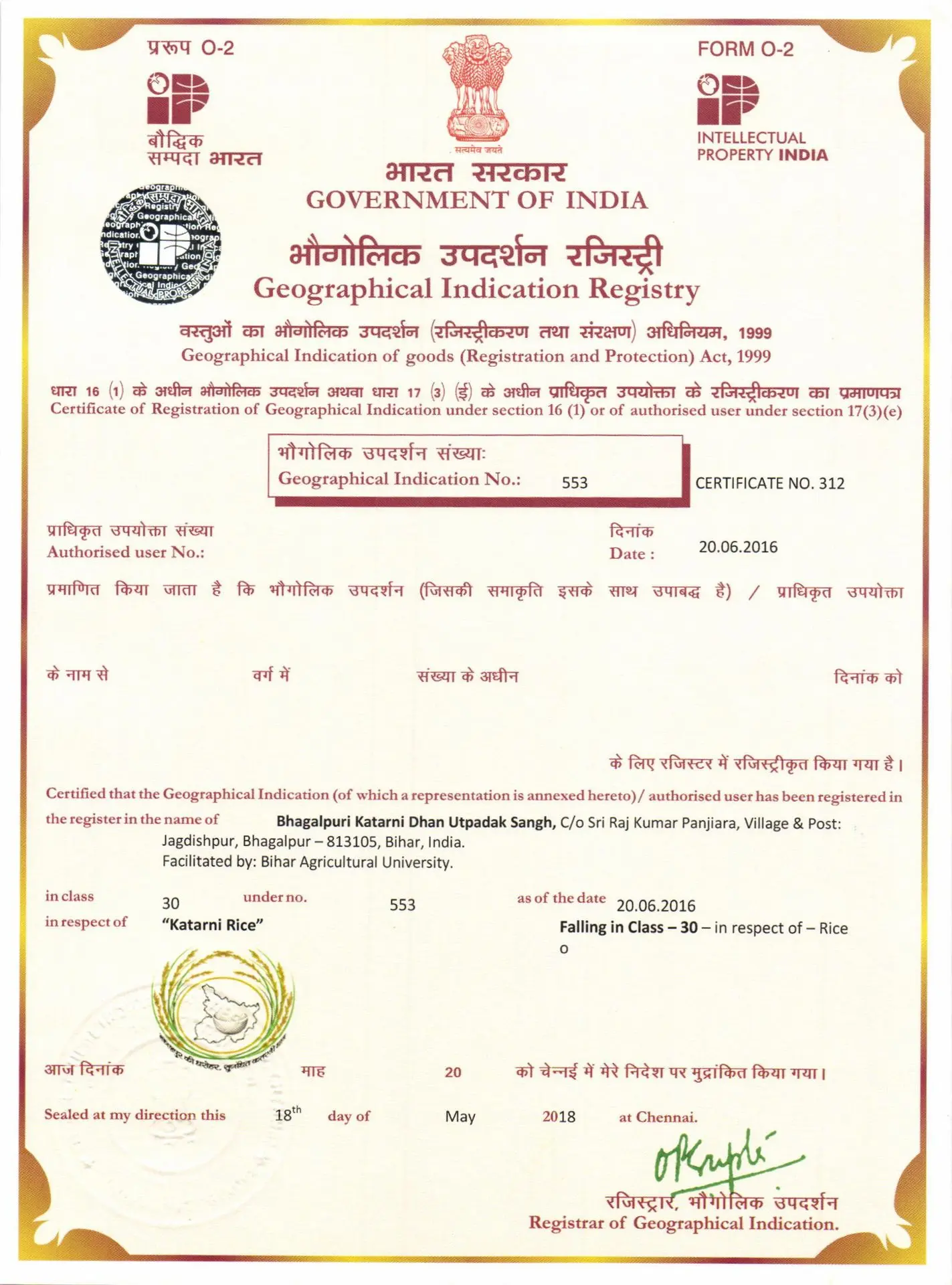
Discovering Katarni Rice
- Katarni Rice is deeply rooted in the cultural heritage of Bihar, serving as a ceremonial scented rice that is prominently featured in traditional rituals, ceremonies, and communal gatherings such as Makar Sankranti, weddings, Chhath Puja, and other festive occasions.
- Historical evidence suggests that scented rice has been cultivated in India for over 2500 years, tracing its origins back to the time of Susruta. Maharaja Rahmat Ali Khan Bahadur of Kharagpur is widely acknowledged as the pioneer who initiated the planting of Katarni in the Bhagalpur region.
- The word Katarni actually comes from the shape of the top of paddy, which looks like the tip of an awl. This tool is also known as "Tanka" in southern Bhagalpur and "Tipunl" in southern Munger.
- Katarni rice is not only in high demand in Bihar, but also across the entire country, demonstrating significant export potential.
- Cultivated in specific blocks within the districts of Bhagalpur, Banka, and Munger in Bihar.
- In 2016, Katarni Rice was officially recognized with a Geographical Indication Certificate.
- Geographical Indication (GI) is a powerful symbol that highlights products originating from specific regions, showcasing their exceptional qualities and characteristics tied to their geographical roots.
- "G" and "l" are abbreviations for Geographical Indication.
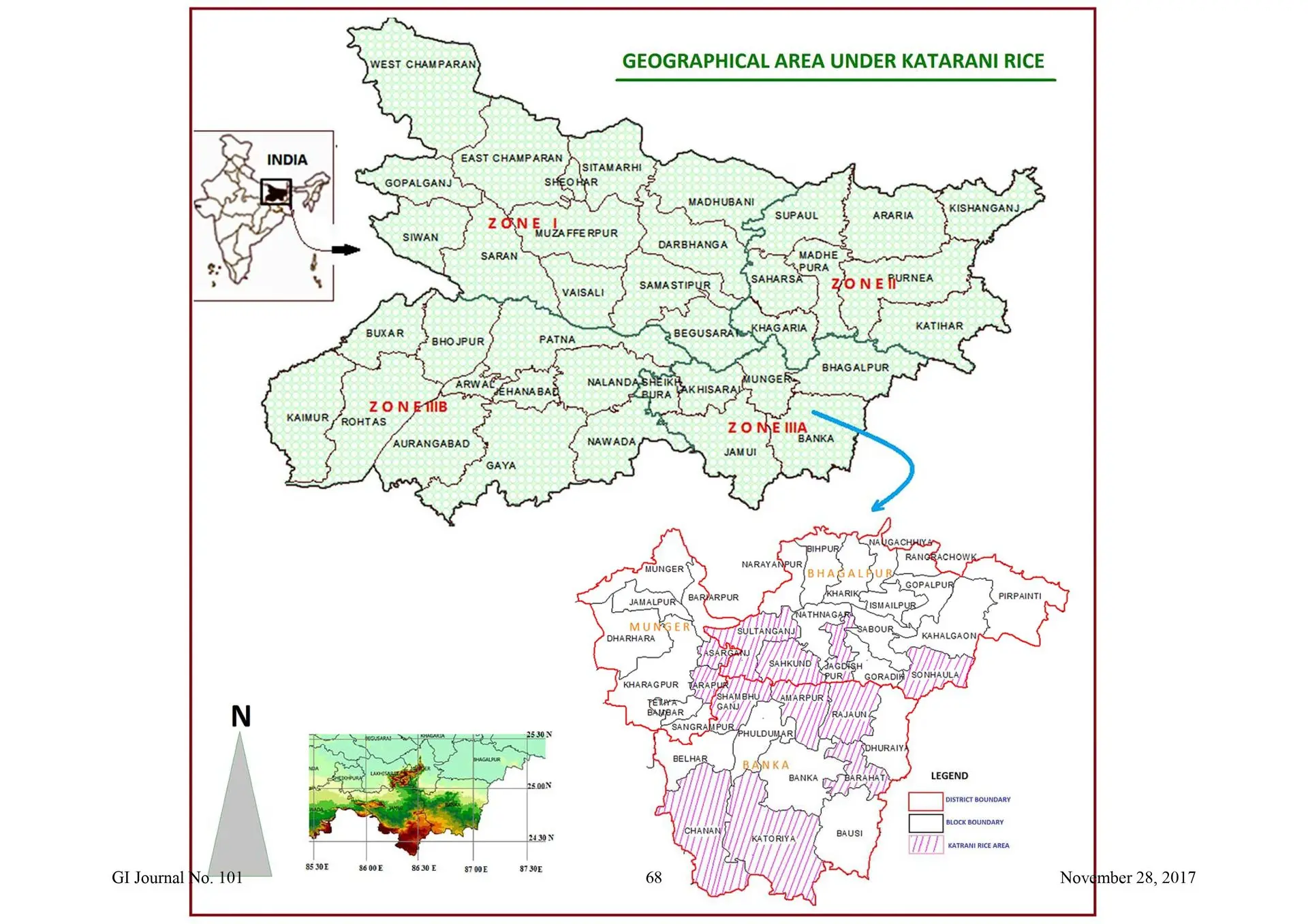
Benefits of Katarni Rice
- Unique tasting, indigenous aromatic, short grain rice.
- Cooked rice is soft, not sticky, subtly sweet, and has a delightful aroma similar to popcorn.
- Elongation after cooking 1:1.80.
- Amylose content-22%-24%.
- Long duration crop it takes 150-160 days to matured.
- At maturity, the plant attains a height of 130-175 cm and exhibits a notably weak culm structure.
- Yield- 1-1.5 tonne /hectare.
- Each paddy seed has the potential to yield up to 3000 grains, representing the highest production level among cereals.
- Its straw is long and soft, and the yield per acre exceeds that of other paddy varieties.
- Long straw is also utilized as roofing material for houses.
Agro Heritage Private Limited
An AGRI-STARTUP, under RKVY-RAFTAAR, DAC & FW, Government of India, New Delhi; incubated at Sabour Agri Incubators (SABAGRIs), Bihar Agricultural University, Sabour, Bhagalpur, Bihar.
OBJECTIVE : To Aggregating, Processing, Branding, Value Addition and Make Ready to Eat Products of G. I. Tagged
(GEOGRAPHICAL INDICATION) BHAGALPURI KATARNI RICE.
Established in 2021, our company has actively participated in numerous national and international food/trade fairs,
resulting in a consistent influx of orders at competitive prices. This success has driven us to collaborate with farmers in cultivating Katarni Paddy without the use of any chemicals throughout the entire process of cultivation, processing, and packaging.



Hon'ble President of India " DROUPADI MURMU " in September 2023 awarded " Plant Genome Saviour Community Award 2021-22 " and endorse in authentication that - A Local Start-Up AGRO HERITAGE has initiated handholding for branding, packaging and marketing of "KATARNI DHAN" on a polit scale.

Discovering Katarni Rice
- Katarni Rice is deeply rooted in the cultural heritage of Bihar, serving as a ceremonial scented rice that is prominently featured in traditional rituals, ceremonies, and communal gatherings such as Makar Sankranti, weddings, Chhath Puja, and other festive occasions.
- Historical evidence suggests that scented rice has been cultivated in India for over 2500 years, tracing its origins back to the time of Susruta. Maharaja Rahmat Ali Khan Bahadur of Kharagpur is widely acknowledged as the pioneer who initiated the planting of Katarni in the Bhagalpur region.
- The word Katarni actually comes from the shape of the top of paddy, which looks like the tip of an awl. This tool is also known as "Tanka" in southern Bhagalpur and "Tipunl" in southern Munger.
- Katarni rice is not only in high demand in Bihar, but also across the entire country, demonstrating significant export potential.
- Cultivated in specific blocks within the districts of Bhagalpur, Banka, and Munger in Bihar.
- In 2016, Katarni Rice was officially recognized with a Geographical Indication Certificate.
- Geographical Indication (GI) is a powerful symbol that highlights products originating from specific regions, showcasing their exceptional qualities and characteristics tied to their geographical roots.
- "G" and "l" are abbreviations for Geographical Indication.
Benefits of Katarni Rice
- Unique tasting, indigenous aromatic, short grain rice.
- Cooked rice is soft, non sticky, subtly sweet, and has a delightful aroma similar to popcorn.
- Elongation after cooking 1:1.80.
- Amylose content-22%-24%.
- Long duration crop it takes 150-160 days to matured.
- At maturity, the plant attains a height of 130-175 cm and exhibits a notably weak culm structure.
- Yield- 1-1.5 tonne /hectare.
- Each paddy seed has the potential to yield up to 3000 grains, representing the highest production level among cereals.
- Its straw is long and soft.
- Long straw is also utilized as roofing material for houses.
Meet the former governor of Bihar.
- Meet ex governor of Bihar at Bamati, Patna, Bihar on 29th march 2022.
- उन्होंने पूछा इसकी खेती में क्या लागत है?
- Yield per acers is 1200kg of Katarni paddy
- Average rate of paddy is Rs 50 per Kg i.e. Rs 60000 per/acre
- Income from straw (अटीया) is Rs 5000
- Total income is Rs 65000 per/acer
- Roughly total expense is Rs 15000 per/acer
- Net income is Rs 50000 per/acer



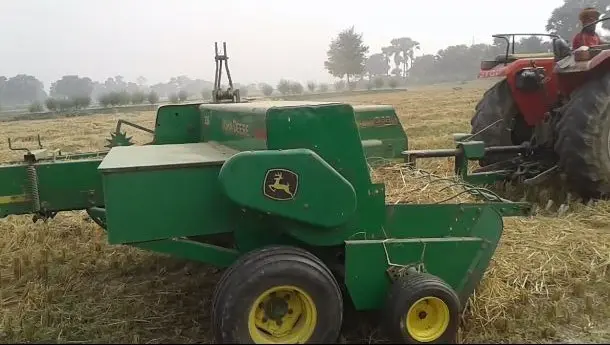
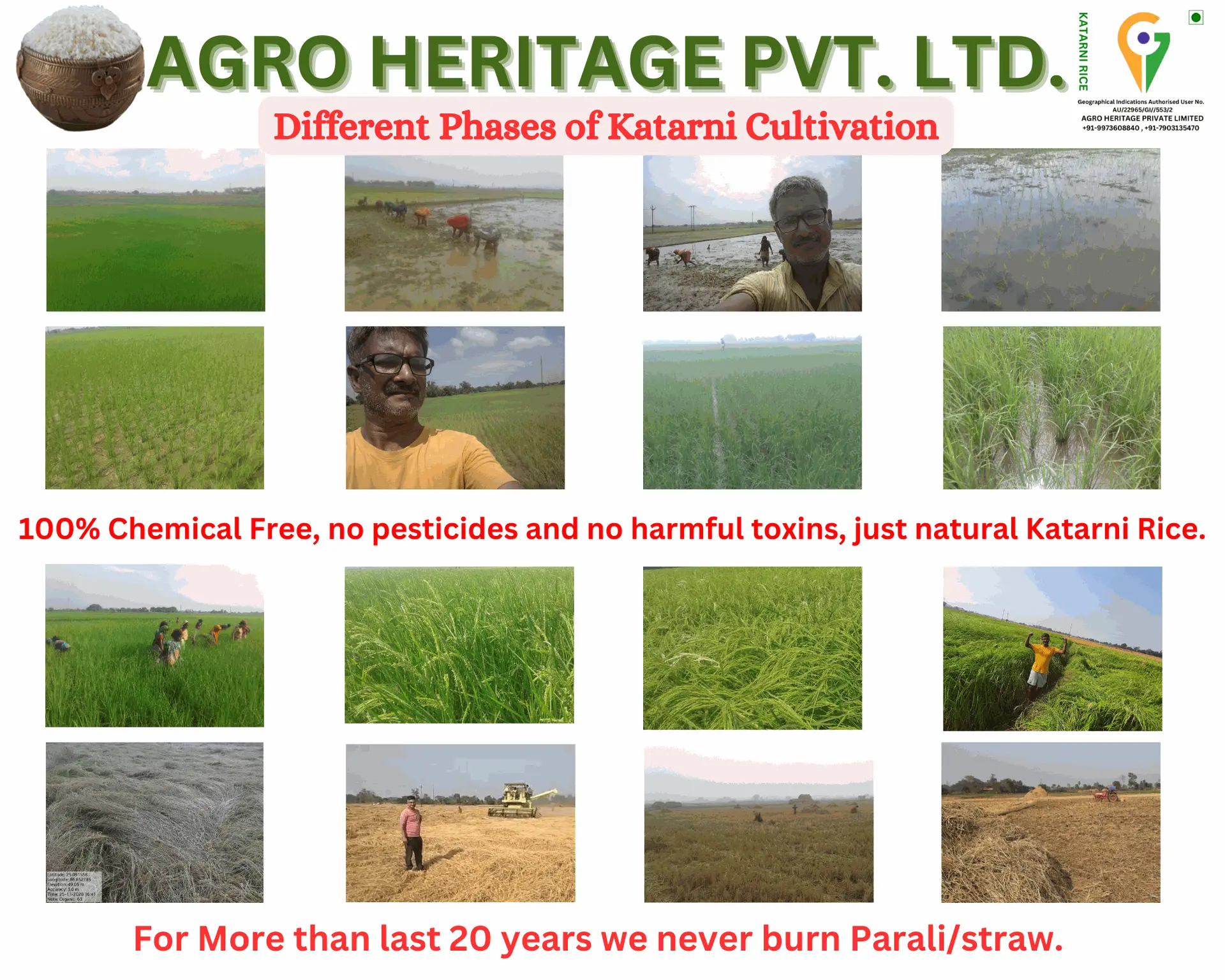
Help us protect and preserve for future generations
Join us and make the planet a better place.




